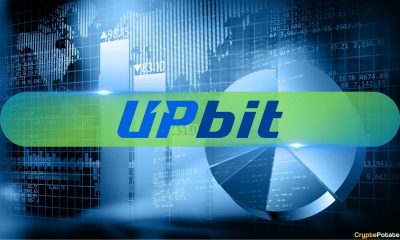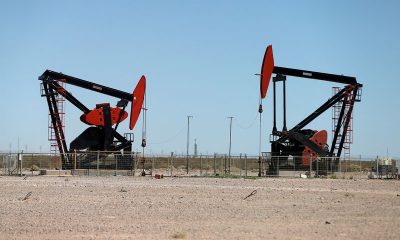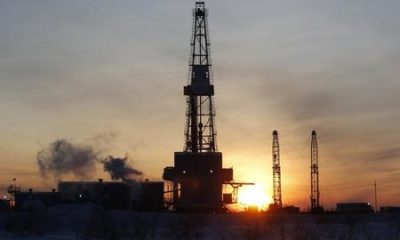Stock Markets
Sam Bankman-Fried will not face a second trial
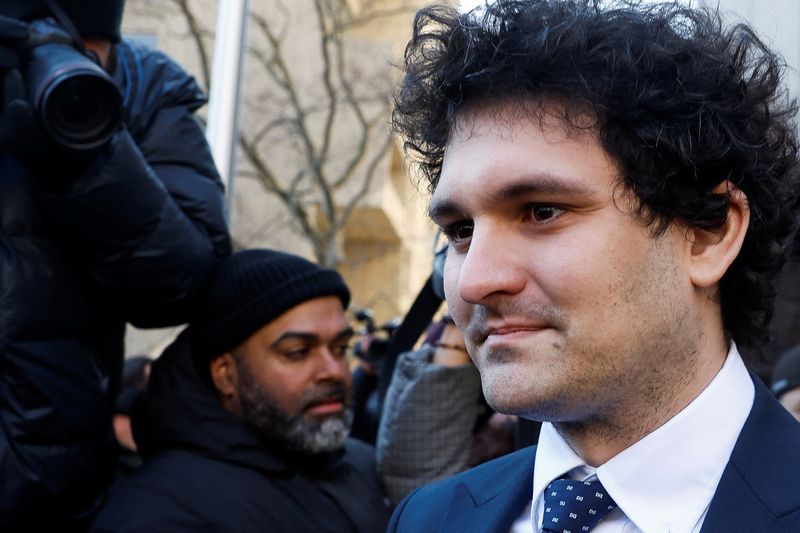
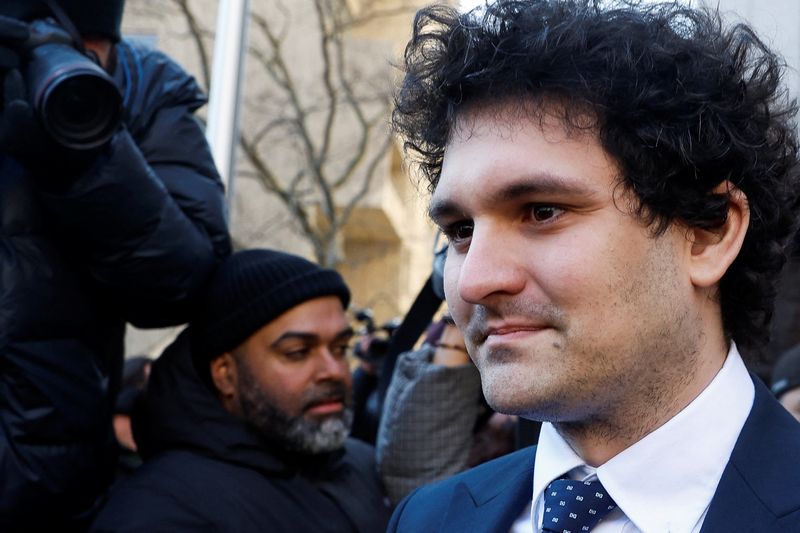
© Reuters. FILE PHOTO: Former FTX Chief Executive Sam Bankman-Fried, who faces fraud charges over the collapse of the bankrupt cryptocurrency exchange, leaves the Manhattan federal court in New York City, U.S. March 30, 2023. REUTERS/Amanda Perobelli/File Photo
By Jonathan Stempel
NEW YORK (Reuters) -U.S. prosecutors said they do not plan to conduct a second trial against Sam Bankman-Fried, who was convicted last month of stealing from customers of his now-bankrupt FTX cryptocurrency exchange.
In a letter filed on Friday night in federal court in Manhattan, prosecutors said the “strong public interest” in a prompt resolution of their case against the 31-year-old former billionaire outweighed the benefits of a second trial.
Prosecutors said that interest “weighs particularly heavily here,” given that Bankman-Fried’s scheduled March 28, 2024, sentencing will likely include orders of forfeiture and restitution for victims of his crimes.
Jurors on Nov. 2 convicted Bankman-Fried on all seven fraud and conspiracy counts he faced. Prosecutors had accused him of looting $8 billion from FTX customers out of sheer greed.
Lawyers for Bankman-Fried declined to comment.
Bankman-Fried had faced six additional charges that had been severed from his first trial, including campaign finance violations, conspiracy to commit bribery, and conspiracy to operate an unlicensed money transmitting business.
He had been extradited in December 2022 from the Bahamas, where FTX was based, to face the seven earlier charges.
The Bahamas has yet to grant its consent for a trial on the remaining charges, however, leaving the timetable uncertain, prosecutors said.
Bankman-Fried’s verdict came nearly one year after FTX filed for bankruptcy, erasing his once-$26 billion personal fortune in one of the fastest collapses of a major participant in U.S. financial markets.
Bankman-Fried could face decades in prison when he is sentenced by U.S. District Judge Lewis Kaplan in Manhattan.
Prosecutors said much of the evidence that could be offered at a second trial was already presented at the first trial.
They also said a second trial would not affect how much time Bankman-Fried could face in prison under recommended federal guidelines, because Kaplan could consider all of Bankman-Fried’s conduct when sentencing him for the counts on which he was convicted.
Bankman-Fried is expected to appeal his conviction.
He testified at trial that he made mistakes running FTX, including by not creating a team to oversee risk management, but did not steal customer funds.
Bankman-Fried also said he thought the borrowing of money from FTX by his crypto-focused hedge fund Alameda Research was permissible, and that he did not realize how precarious their finances had become until shortly before both collapsed.
The Massachusetts Institute of Technology graduate has been jailed since August, when Kaplan revoked his bail after concluding that Bankman-Fried had likely tampered with prospective trial witnesses.
The case is U.S. v. Bankman-Fried, U.S. District Court, Southern District of New York, No. 22-cr-00673.
Stock Markets
ROSEN, LEADING TRIAL ATTORNEYS, Encourages QuidelOrtho Corporation Investors to Secure Counsel Before Important Deadline in Securities Class Action “ QDEL

NEW YORK, April 27, 2024 (GLOBE NEWSWIRE) —
WHY: Rosen Law Firm, a global investor rights law firm, reminds purchasers of common stock of QuidelOrtho Corporation (NASDAQ: QDEL) between February 18, 2022 and April 1, 2024, both dates inclusive (the Class Period) of the important June 11, 2024 lead plaintiff deadline.
SO WHAT: If you purchased QuidelOrtho common stock during the Class Period you may be entitled to compensation without payment of any out of pocket fees or costs through a contingency fee arrangement.
WHAT TO DO NEXT: To join the QuidelOrtho class action, go to https://rosenlegal.com/submit-form/?case_id=22828 or call Phillip Kim, Esq. toll-free at 866-767-3653 or email case@rosenlegal.com for information on the class action. A class action lawsuit has already been filed. If you wish to serve as lead plaintiff, you must move the Court no later than June 11, 2024. A lead plaintiff is a representative party acting on behalf of other class members in directing the litigation.
WHY ROSEN LAW: We encourage investors to select qualified counsel with a track record of success in leadership roles. Often, firms issuing notices do not have comparable experience, resources or any meaningful peer recognition. Many of these firms do not actually litigate securities class actions, but are merely middlemen that refer clients or partner with law firms that actually litigate the cases. Be wise in selecting counsel. The Rosen Law Firm represents investors throughout the globe, concentrating its practice in securities class actions and shareholder derivative litigation. Rosen Law Firm has achieved the largest ever securities class action settlement against a Chinese Company. Rosen Law Firm was Ranked No. 1 by ISS Securities Class Action Services for number of securities class action settlements in 2017. The firm has been ranked in the top 4 each year since 2013 and has recovered hundreds of millions of dollars for investors. In 2019 alone the firm secured over $438 million for investors. In 2020, founding partner Laurence Rosen was named by law360 as a Titan of Plaintiffs’ Bar. Many of the firm’s attorneys have been recognized by Lawdragon and Super Lawyers.
remove ads
.
DETAILS OF THE CASE: According to the lawsuit, defendants made false and/or misleading statements and/or failed to disclose that: (1) QuidelOrtho sold more COVID-19 tests to its distributors and pharmacy chain customers than they could resell to healthcare providers and end customers; (2) excess inventories of COVID-19 tests existed throughout the supply chain; (3) as a result, QuidelOrtho’s distributors and pharmacy chain customers were poised to significantly reduce their COVID-19 test orders; (4) undisclosed problems created a heightened risk that the Savanna RVP4 Test, QuidelOrtho’s new flagship product which tests for COVID-19 and other respiratory conditions, would experience a delayed commercial launch in the United States; and (5) as a result, defendants lacked a reasonable basis for their positive statements about QuidelOrtho’s business, financials, and growth trajectory. When the true details entered the market, the lawsuit claims that investors suffered damages.
To join the QuidelOrtho class action, go to https://rosenlegal.com/submit-form/?case_id=22828 or call Phillip Kim, Esq. toll-free at 866-767-3653 or email case@rosenlegal.com for information on the class action.
No Class Has Been Certified. Until a class is certified, you are not represented by counsel unless you retain one. You may select counsel of your choice. You may also remain an absent class member and do nothing at this point. An investor’s ability to share in any potential future recovery is not dependent upon serving as lead plaintiff.
Follow us for updates on LinkedIn: https://www.linkedin.com/company/the-rosen-law-firm, on Twitter: https://twitter.com/rosen_firm or on Facebook (NASDAQ:): https://www.facebook.com/rosenlawfirm/.
Attorney Advertising. Prior results do not guarantee a similar outcome.
remove ads
.
——————————-
Contact Information:
Laurence Rosen, Esq.
Phillip Kim, Esq.
The Rosen Law Firm, P.A.
275 Madison Avenue, 40th Floor
New York, NY 10016
Tel: (212) 686-1060
Toll Free: (866) 767-3653
Fax: (212) 202-3827
case@rosenlegal.com
www.rosenlegal.com
Stock Markets
Rocked by spy scandal, Germany’s far-right reprises old themes at campaign launch

By Thomas Escritt
DONAUESCHINGEN, Germany (Reuters) – Buffeted by sliding poll ratings and reeling from allegations that it had harboured a Chinese spy in its ranks, Germany’s far-right Alternative for Germany sought to recover lost momentum at the Saturday launch of its campaign for June’s European Parliament elections.
Support for the AfD, which at the start of the year was vying with the conservatives to top opinion polls in Germany, was ebbing even before the arrest this week of an assistant to its lead candidate Maximilian Krah on espionage charges.
That followed media reports that Czech security had evidence that Petr Bystron, second-placed on the party’s list, had taken money from a website with links to the Kremlin.
Bystron has described the allegations as part of a campaign against him. Krah said that he remained the lead candidate but would play a less prominent role in the campaign. At this stage, party slates are finalized, meaning it is no longer possible to change them before the election.
The party’s political opponents have long charged it with serving Russia’s interests with its regular calls for Germany and the West to stop arming Ukraine. An FW opinion poll that included people’s view of threats to the country, published on Friday, suggested this message now resonated, with 75% seeing foreign influence operations as a danger for Germany.
The party’s co-leader Tino Chrupalla brushed aside events that had effectively deprived the party of its two top candidates ahead of the June 9 elections, saying Krah had himself volunteered not to turn up at Saturday’s launch.
remove ads
.
“I’d like to thank Maximilian Krah for saying that he wouldn’t speak today,” Chrupalla said. “Otherwise it would have all been about Krah, Krah, Krah when today is really about the AfD.”
The launch, in a town best known as the source of the River Danube, was an opportunity for the party to reprise its habitual themes, accusing migrants of flocking to Germany for welfare benefits and the ruling coalition parties of being obsessed with allowing “yearly sex changes”.
Attacks on the Greens, especially Foreign Minister Annalena Baerbock, drew the loudest applause from an audience of party activists, some of whom had driven hundreds of km (miles) to spend a sunny afternoon in the darkened hall.
Stock Markets
As solar capacity grows, some of America’s most productive farmland is at risk
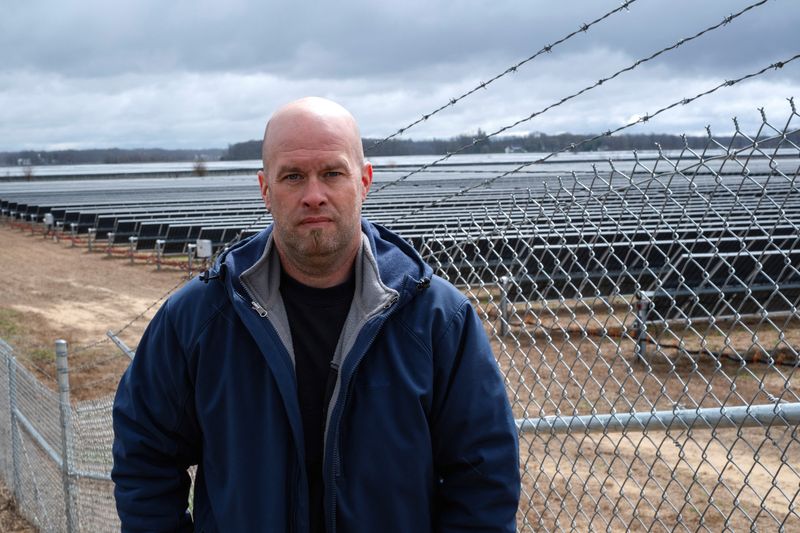
By P.J. Huffstutter and Christopher Walljasper
JASPER COUNTY, INDIANA (Reuters) – Dave Duttlinger’s first thought when he saw a dense band of yellowish-brown dust smearing the sky above his Indiana farm was: I warned them this would happen.
About 445 acres of his fields near Wheatfield, Indiana, are covered in solar panels and related machinery – land that in April 2019 Duttlinger leased to Dunns Bridge Solar LLC, for one of the largest solar developments in the Midwest.
On that blustery spring afternoon in 2022, Duttlinger said, his phone rang with questions from frustrated neighbors: Why is dust from your farm inside my truck? Inside my house? Who should I call to clean it up?
According to Duttlinger’s solar lease, reviewed by Reuters, Dunns Bridge said it would use “commercially reasonable efforts to minimize any damage to and disturbance of growing crops and crop land caused by its construction activities” outside the project site and “not remove topsoil” from the property itself. Still, sub-contractors graded Duttlinger’s fields to assist the building of roads and installation of posts and panels, he said, despite his warnings that it could make the land more vulnerable to erosion.
Crews reshaped the landscape, spreading fine sand across large stretches of rich topsoil, Duttlinger said. When Reuters visited his farm last year and this spring, much of the land beneath the panels was covered in yellow-brown sand, where no plants grew.
“I’ll never be able to grow anything on that field again,” the farmer said. About one-third of his approximately 1,200-acre farm – where his family grows corn, soybeans and alfalfa for cattle – has been leased.
remove ads
.
The Dunns Bridge Solar project is a subsidiary of NextEra Energy (NYSE:) Resources LLC, the world’s largest generator of renewable energy from wind and solar. Duttlinger said when he approached NextEra about the damage to his land, the company said it would review any remedial work needed at the end of its contract in 2073, as per the terms of the agreement.
NextEra declined to comment on the matter or on what future commitments it made to Duttlinger, and Reuters could not independently confirm them. Project developer Orion Renewable Energy Group (NASDAQ:) LLC directed questions to NextEra.
The solar industry is pushing into the U.S. Midwest, drawn by cheaper land rents, access to electric transmission, and a wealth of federal and state incentives. The region also has what solar needs: wide-open fields.
A renewable energy boom risks damaging some of America’s richest soils in key farming states like Indiana, according to a Reuters analysis of federal, state and local data; hundreds of pages of court records; and interviews with more than 100 energy and soil scientists, agricultural economists, farmers and farmland owners, and local, state and federal lawmakers.
Some of Duttlinger’s farm, including parts now covered in solar panels, is on land classified by the U.S. Department of Agriculture (USDA) as the most productive for growing crops, according to a Reuters analysis.
For landowners like Duttlinger, the promise of profits is appealing. Solar leases in Indiana and surrounding states can offer $900 to $1,500 an acre per year in land rents, with annual rate increases, according to a Reuters review of solar leases and interviews with four solar project developers. In comparison, farmland rent in top corn and soybean producers Indiana, Illinois and Iowa averaged about $251 per acre in 2023, USDA data shows.
remove ads
.
Farmland Partners Inc, a publicly traded farmland real estate investment trust (REIT) has leased about 9,000 acres nationwide to solar firms. Much of that ground is highly productive, said Executive Chairman Paul Pittman.
“Do I think it’s the best use of that land? Probably not. But our investors would kill us if we didn’t pursue this,” he said.
Some renewable energy developers said not all leases become solar projects. Some are designing their sites to make it possible to grow crops between panels, while others, like Doral Renewables LLC, said they use livestock to graze around the panels as part of their land management. Developers also argue that in the Midwest, where more than one-third of the U.S. corn crop is used for ethanol production, solar energy is key for powering future electric vehicles.
Some agricultural economists and agronomists counter that taking even small amounts of the best cropland out of production for solar development and damaging valuable topsoil impacts future crop potential in the United States.
Common solar farm construction practices, including clearing and grading large sections of land, also can lead to significant erosion and major runoff of sediment into waterways without proper remediation, according to the U.S. Environmental Protection Agency and the Justice Department.
Solar development comes amid increasing competition for land: In 2023, there were 76.2 million – or nearly 8% – fewer acres in farms than in 1997, USDA data shows, as farmland is converted for residential, commercial and industrial use.
In response to Reuters’ findings, USDA said that urban sprawl and development are currently bigger contributors to farmland loss than solar, citing reports from the Department of Energy and agency-funded research.
remove ads
.
BUILDING ON PRIME CROPLAND
No one knows how much cropland nationwide is currently under solar panels or leased for possible future development. Land deals are typically private transactions. Scientists at the United States Geological Survey and the U.S. Department of Energy’s Lawrence Berkeley National Laboratory have been compiling a database of existing solar facilities across the country. While that project is incomplete and ongoing, Reuters found that around 0.02% of all cropland in the continental U.S. intersected in some way with large-scale, ground-based solar panel sites they had identified as of 2021.
The total power capacity of the solar operations tracked in the data set represents over 60 gigawatts of electric power capacity. In the following two years, solar capacity has nearly tripled, according to a Dec. 2023 report from the Solar Energy Industries Association (SEIA) and Wood Mackenzie.
To better understand future land-use patterns, Reuters analyzed federal government data to identify cropland that USDA classified as prime, unique, or of local or statewide importance. Reuters also reviewed more than 2,000 pages of solar-related documents filed at local county recorders’ offices in a small sample of four Midwestern counties – Pulaski, Starke and Jasper counties in Indiana, and Columbia County in Wisconsin.
The counties, representing an area of land slightly bigger than the state of Delaware, are where some of the nation’s largest projects are being developed or built. The sample is not necessarily representative of the broader United States but gives an idea of the potential impact of solar projects in farm-heavy counties.
remove ads
.
Reuters found the percentage of these counties’ most productive cropland secured by solar and energy companies as of end of 2022 was as follows: 12% in Pulaski, 9% in Starke, 4% in Jasper and 5% in Columbia.
Jerry Hatfield, former director of USDA Agricultural Research Service’s National Laboratory for Agriculture and the Environment, said Reuters’ findings in the four counties are “concerning.”
“It’s not the number of acres converting to solar,” he said. “It’s the quality of the land coming out of production, and what that means for local economies, state economies and the country’s future abilities for crop production.”
More than a dozen agronomists, as well as renewable energy researchers and other experts consulted by Reuters, said the approach to measuring solar’s impact was fair. The news agency also shared its findings with six solar developers and energy firms working in these counties. Three said Reuters’ sample size was too small, and the range of findings too wide, to be a fair portrayal of industry siting and construction practices.
By 2050, to meet the Biden Administration’s decarbonization targets, the U.S. will need up to 1,570 gigawatts of electric energy capacity from solar.
While the land needed for ground-based solar development to achieve this goal won’t be even by state, it is not expected to exceed 5% of any state’s land area, except the smallest state of Rhode Island, where it could reach 6.5%, by 2050, according to the Energy Department’s Solar Futures Study, published in 2021.
Researchers at American Farmland (NYSE:) Trust, a non-profit farmland protection organization which champions what it calls Smart Solar, forecast last year that 83% of new solar energy development in the U.S. will be on farm and ranchland, unless current government policies changed. Nearly half would be on the nation’s best land for producing food, fiber, and other crops, they warned.
remove ads
.
FUEL DEBATE
Five renewable developers and solar energy firms interviewed by Reuters counter that the industry’s use of farmland is too small to impact domestic food production overall and should be balanced with the need to decarbonize the U.S. energy market in the face of climate change.
Doral Renewables, the developer behind the $1.5 billion Mammoth Solar project in Pulaski and Starke counties, does not consider corn or soybean yields in its siting decisions.
Instead, the company looks at the land’s topography, zoning and closeness to an electrical grid or substation – and tries to avoid wooded areas, ditches and environmentally sensitive areas, said Nick Cohen, Doral’s president and CEO.
Shifting corn acres for solar? “I don’t see it as replacing something that is vital to our society,” Cohen said. Solar can make farmland “more productive from an economic perspective,” he added.
Indiana farmer Norm Welker says he got a better deal leasing 60% of his farmland to Mammoth than he would have growing corn, with prices dipping to three-year lows this year.
“We’ve got mounds of corn, we’re below the cost of production, and right now, if you’re renting land to grow corn – you’re losing money,” Welker said. “This way, my economic circumstances are very good.”

 Forex2 years ago
Forex2 years agoForex Today: the dollar is gaining strength amid gloomy sentiment at the start of the Fed’s week

 Forex2 years ago
Forex2 years agoHow is the Australian dollar doing today?

 Forex1 year ago
Forex1 year agoUnbiased review of Pocket Option broker

 Forex2 years ago
Forex2 years agoDollar to pound sterling exchange rate today: Pound plummeted to its lowest since 1985

 Cryptocurrency2 years ago
Cryptocurrency2 years agoWhat happened in the crypto market – current events today

 World2 years ago
World2 years agoWhy are modern video games an art form?

 Stock Markets2 years ago
Stock Markets2 years agoMorgan Stanley: bear market rally to continue

 Economy2 years ago
Economy2 years agoCrude oil tankers double in price due to EU anti-Russian sanctions



